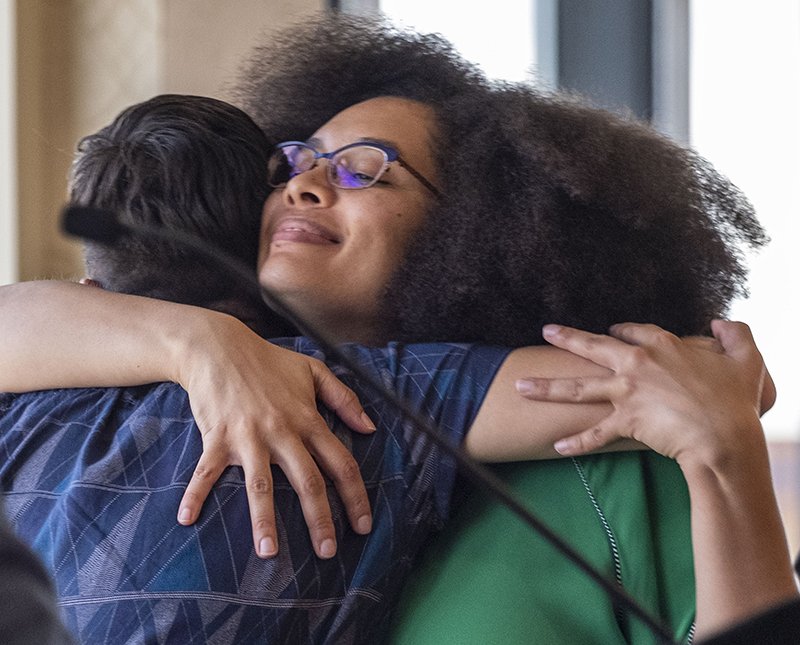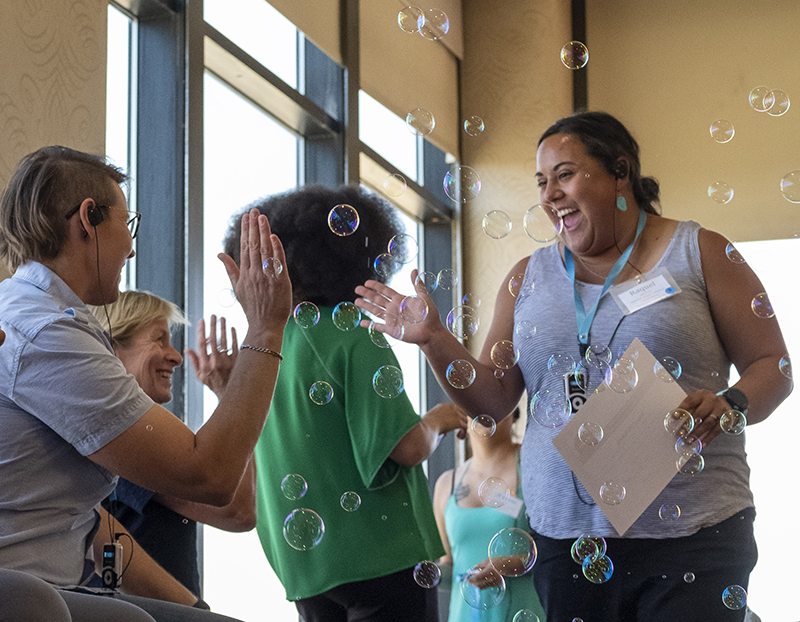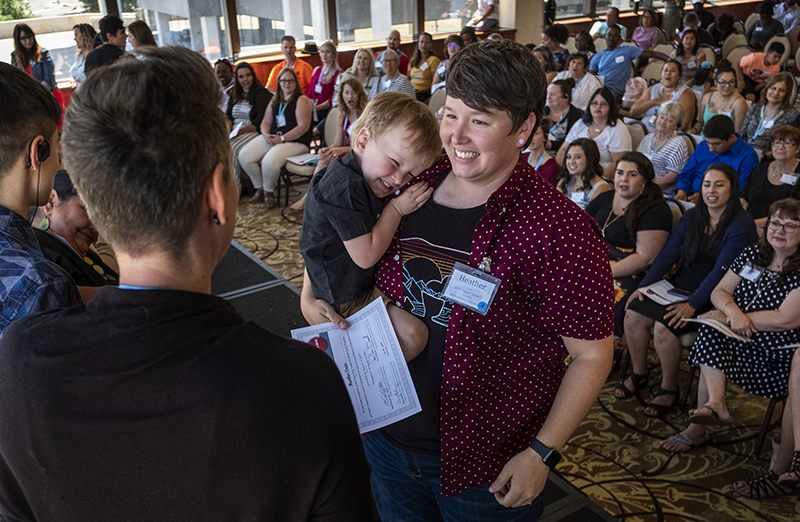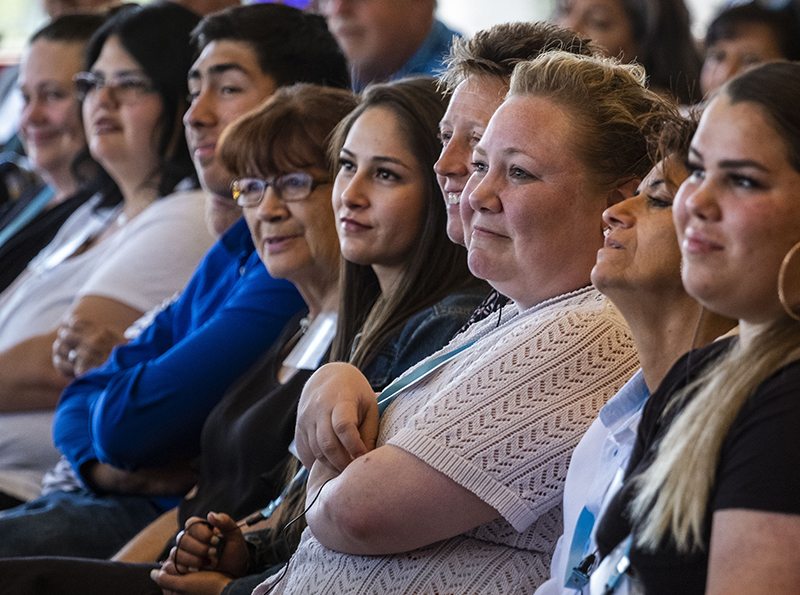The Coloradans Bridging Our Deepest Divides
Leer en español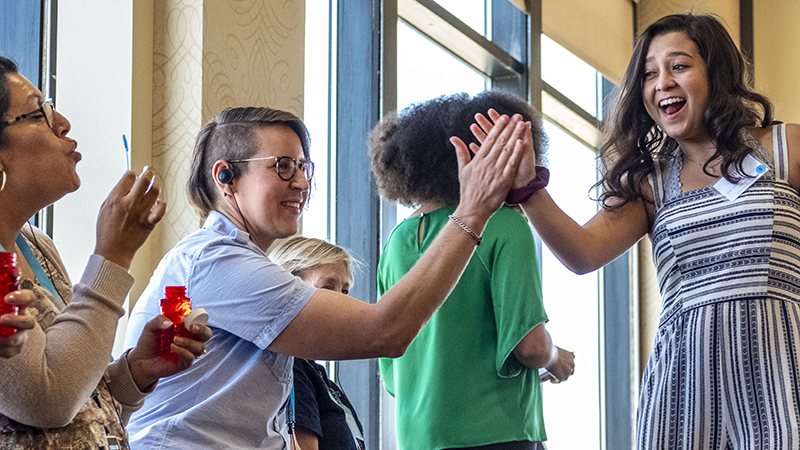
On Saturday, August 3, Cindy Marquez was among dozens of Colorado community leaders who celebrated their graduation from a challenging 17-month training program. Photos by Joe Mahoney/Special to The Colorado Trust
By Kristin Jones
Racism. Classism. Sexism. Nationalism. Oppression.
Are these words divisive?
They are words that explain some of the most brutal divisions between us. The ones at the root of differences in our sense of belonging, our capacity to live the lives we want, how long we live and the safety of our children. But do the words themselves invoke divisions by describing them?
When 90 community leaders from across the state gathered in Denver in April 2018 for the start of a training program in health equity, they learned that they would be studying these topics in a series of multi-day convenings across the state, spread out over 17 months. The program, called Community Leaders in Health Equity, was conceived and executed by anti-oppression educators Transformative Alliances and funded by The Colorado Trust.
A handful dropped out. But most stayed.
Ahead of their graduation from the program in August 2019, the reflections from the participants were not about divisions at all. They were about the relationships they had built with each other, the sustaining friendships and their own personal growth.
“It completely changed my outlook on life in general,” said Georgia Hoaglund, a participant in the program. She is the executive director of the Western Colorado Area Health Education Center in Grand Junction.
“Even though I’ve lived in lots of states, I had never understood or known about nationalism. I lived near reservations, but I never grasped the Native American population and what they had been through,” said Hoaglund. A lot of the history was new to her, as well as some of the concepts. “Of course, in the Western Slope we’re not like metro Denver. There’s not ever classes over here talking about the LGBT and transgender community. I wasn’t educated in that.”
The experience wasn’t easy—for anyone. Hoaglund recalled one activity that required the participants to role-play parts of a traumatic cross-border immigration experience. She played the role of a Western Union employee. Afterwards, during a debrief alongside fellow participants who were themselves immigrants, Hoaglund told them she thought it was an “amazing” experience.
“They looked at me and said, ‘Amazing? That happened to my family,’” said Hoaglund. “That got into my heart. It got into my brain. There I was, and my takeaway was how great it was for my learning.”
When she got back home, “I told my office staff, ‘We have to find something to do about nationalism. We have to do something for our community.’ I came home and had lots of conversations with my children,” said Hoaglund.
The program required a lot of its participants. Along with the difficulty of the material, there were practical obstacles. After the first gathering in Denver, there were sessions in Grand Junction, Fort Morgan, Pueblo and Carbondale. People traveled from across the state. Child care and transportation were provided, along with stipends for people who missed out on pay to be there.
Nonetheless, it was a hardship for some to make the three- and four-day commitments, along with regional gatherings in between those larger events; not everyone who wanted to stay in the course was able to do so. The participants were also tasked with coming up with personal projects to align with their learnings, as well as community projects.
Projects take on big issues
In the first days of August, the participants presented these projects to each other. Many of the individual projects grew from people’s own experiences with institutionalized forms of racism, classism, sexism, nationalism and other forms of oppression.
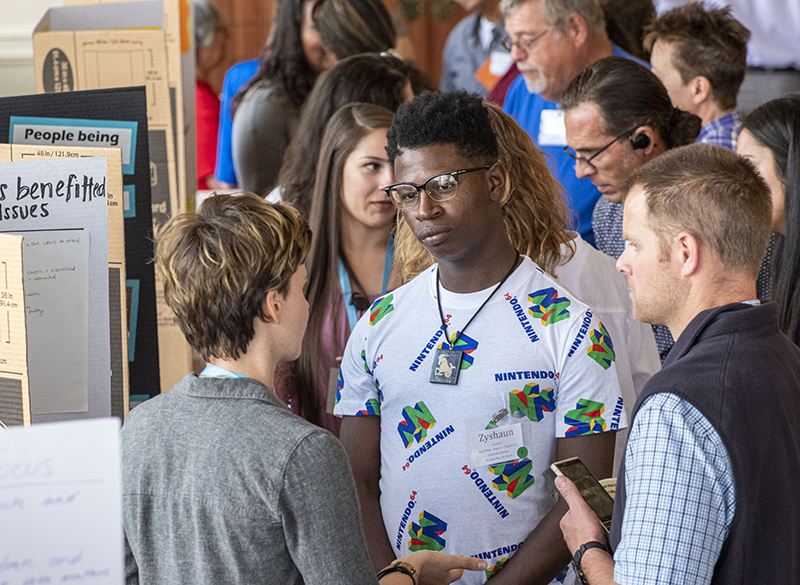 Zyshaun Jackson, a recent high school graduate in Colorado Springs, is bringing students and teachers together to propose incorporating ethnic studies in his school district’s curriculum.
Zyshaun Jackson, a recent high school graduate in Colorado Springs, is bringing students and teachers together to propose incorporating ethnic studies in his school district’s curriculum.
“The only history I’ve ever learned in school about Black people is about slaves, or the bad stuff.” He thinks teaching more history in school would be a way of addressing intergenerational trauma. Jackson is also involved in an effort to build a new community center focused on people of color in his city.
Kerri Horton shared the story of leaving an abusive relationship and recovering from substance abuse. Initially convinced that she didn’t have a voice, she was persuaded to register to vote in 2006. She later became one of just four women to ever serve on the Yuma City Council; Horton and others have started a project based in Yuma and Fort Morgan to increase voter turnout and representation among women—with an emphasis on women of color.
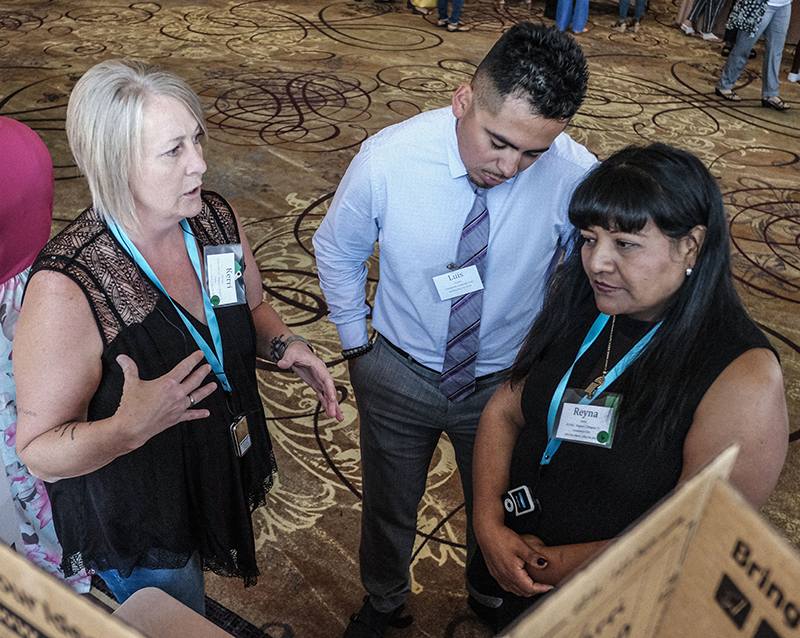 A group of women affiliated with the community leadership organization Cultivando, based in Commerce City, had taken on an initiative to advocate for wider use of a promotora model. This is a model, sometimes used in health care, in which trusted community leaders deliver information and support to their peers; it can also be used to improve education, access to affordable housing and healthy food, and ease the barriers associated with immigration.
A group of women affiliated with the community leadership organization Cultivando, based in Commerce City, had taken on an initiative to advocate for wider use of a promotora model. This is a model, sometimes used in health care, in which trusted community leaders deliver information and support to their peers; it can also be used to improve education, access to affordable housing and healthy food, and ease the barriers associated with immigration.
One young participant, Cindy Marquez, had the idea of providing headsets and real-time English-Spanish interpretation for her graduation from Fort Morgan High School in May. She wanted her parents, who immigrated to the U.S. from Chihuahua, Mexico before she was born, to be able to understand the ceremony. It worked; the school administrators agreed, and a community group called Fort Morgan Cultures United for Progress (which receives funding from The Trust) provided a grant for the initiative.
“For my parents, it wasn’t just another event that they had to attend,” said Marquez. She’s used to interpreting or translating for them. But this time, when she walked across the stage to receive her diploma, she didn’t have to.
Several of the projects were, like Marquez’s, aimed at bridging language barriers, in an effort to address the language oppression, nationalism and anti-immigrant bias that make some people feel excluded in their own towns and cities.
A team from Lamar came up with a plan to provide simultaneous Spanish-English interpretation to offices and agencies in their town. They’ve already bought the equipment, and have a plan to train people to act as interpreters when needed.
“We have a divided town in Lamar,” said Christy Johnson, a white woman who recalled her mother warning her to stay away from Mexicans from the time she was a child. “Mexicans on one side, white people on the other.”
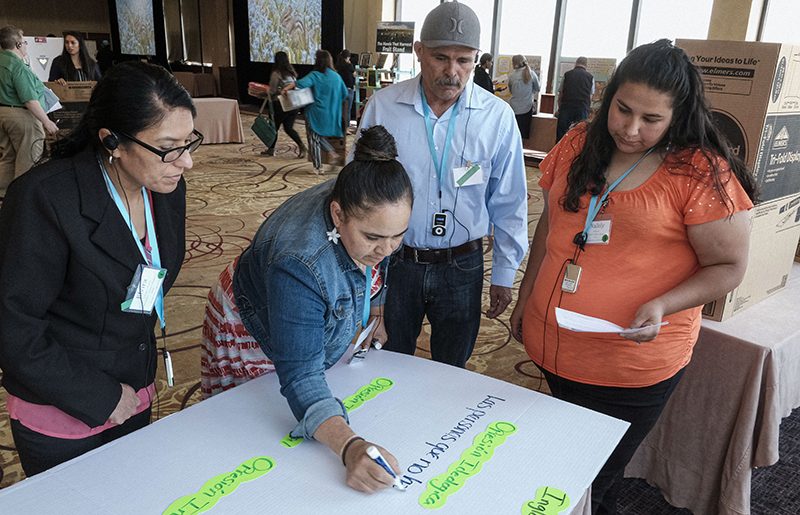
Alicia Mungaray writes on a poster board in preparation for a presentation on a project aimed at increasing the availability of classes in English as a second language in her town of Lamar.
Alicia Mungaray is part of the same team, as well as another team working to start more classes for ESL (English as a second language) learners. She came to this country 23 years ago, travelling with her 2-year-old daughter from a town outside Zacatecas, Mexico, and settling on the Eastern Plains of Colorado because she wanted a better life for her family.
When she got here, she couldn’t talk to anyone. Couldn’t understand what people were saying. She didn’t have much money or education. She started working in the school, cleaning up the playground. She eventually got a full-time job as a custodian, which lasted until the recession. Things were tough after that.
Through it all, Mungaray has volunteered. Among other projects, she has worked to clean up abandoned houses in the town, and helped bring art into public spaces.
Why take on all the extra work when just getting by can be difficult enough?
“I wanted to be someone,” said Mungaray.
Radical acts of healing
On Saturday, Aug. 3, two visions of the United States exerted their power just a few hundred miles apart.
That morning, a gunman walked into a Walmart in El Paso, Texas, and opened fire, killing 22 people. He later told investigators that he was targeting Mexicans. It was just the first mass shooting of the weekend.
At the same time, dozens of community leaders were gathering for the last time at a hotel in Lakewood, Colorado. It was graduation day for the Community Leaders in Health Equity program participants. Hundreds of their family members and friends traveled to join and celebrate their achievements with tears and cake. Everyone there was someone, and they could see and hear each other at last.
At a time when violence has become routine, it’s acts of healing that can seem radical.
